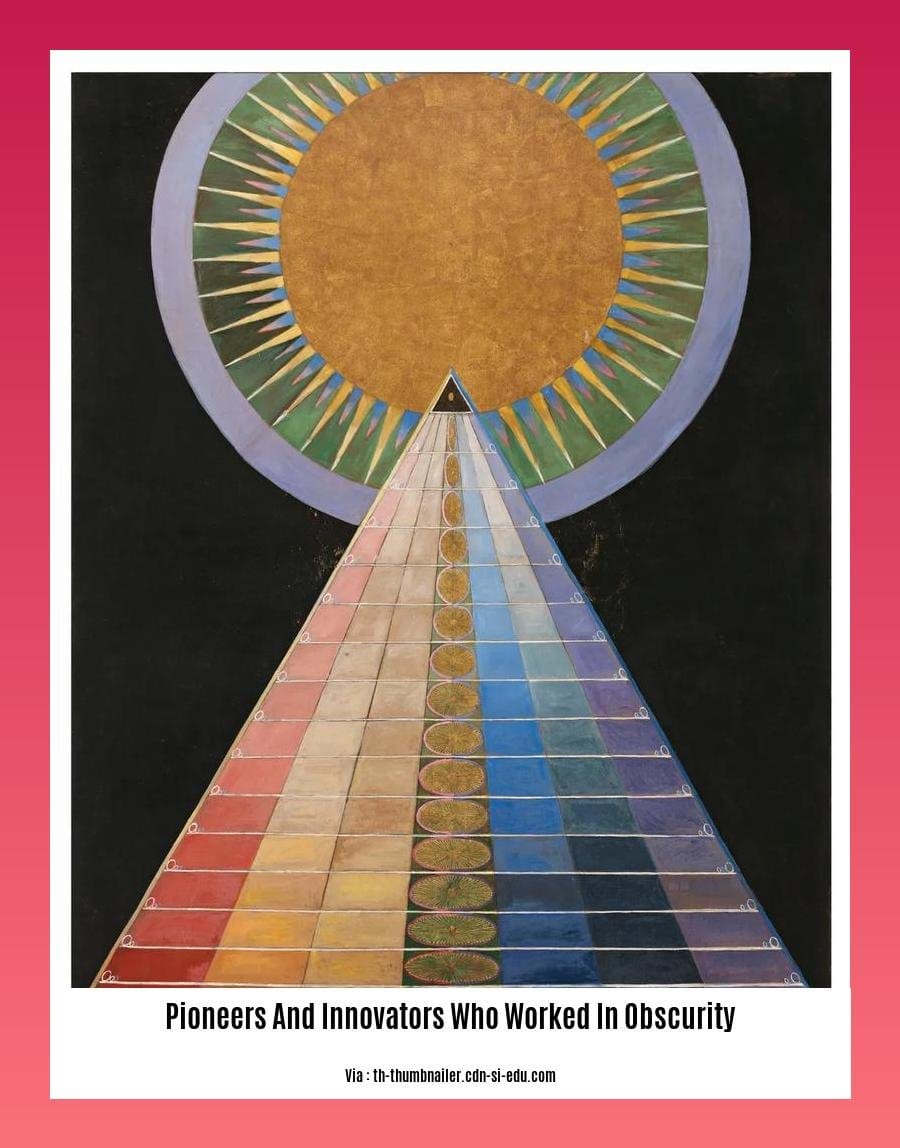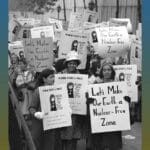**Forgotten Pioneers and Innovators: Shining Light on Unsung Heroes**
Subrahmanyan Chandrasekhar, Lise Meitner, Rosalind Franklin, and Chien-Shiung Wu—these names may not be household words, but their contributions to science and our understanding of the world are immeasurable. They are among the unsung heroes of history, pioneers and innovators whose brilliance illuminated the path for generations to come.
Key Takeaways:

- Black Pioneers Transformed Science:
- Garrett Morgan: Invented safety devices like the smoke hood and traffic signal.
- Mary Seacole: Provided medical care during the Crimean War.
- George Washington Carver: Made advancements in agricultural science.
- Lewis Latimer: Improved the light bulb.
- Alice Parker: Designed a more efficient heating system.
- Unsung Innovators:
- Ten lesser-known Black innovators have made significant contributions to STEM.
Pioneers and Innovators Who Worked in Obscurity
They toiled in obscurity, their names unknown and their contributions forgotten. But their work laid the foundation for the world we live in today.
Throughout history, countless pioneers and innovators who worked in obscurity have made significant contributions to science, technology, and other fields. Their stories are often untold, their achievements overshadowed by those of more famous contemporaries.
But their work is no less important. In fact, it is often the foundation upon which others have built their success.
Black inventors played a pivotal role in the development of STEM fields. Garrett Morgan invented the smoke hood and the traffic signal, Mary Seacole was a Jamaican-born nurse who provided medical care during the Crimean War, and George Washington Carver developed hundreds of uses for peanuts and soybeans.
Yet, their stories are often untold. We need to shine a light on their contributions and ensure that their names are not forgotten.
Here are a few things we can do to recognize the work of pioneers and innovators who worked in obscurity:**
- Tell their stories. Share their stories with your friends, family, and colleagues. Write about them on social media, in blog posts, and in articles.
- Support their work. If you see a project or initiative that is working to highlight the contributions of pioneers and innovators who worked in obscurity, support it with your time, money, or both.
- Be inspired by their example. Their stories can remind us of the power of perseverance and the importance of never giving up on your dreams.
By shining a light on the work of pioneers and innovators who worked in obscurity, we can help to ensure that their contributions are not forgotten.
And we can inspire future generations to follow in their footsteps.
If you are looking for the real innovators and pioneers who worked in obscurity, forgotten by fame but whose contributions are revolutionary, then you should discover the unsung heroes whose pioneering toiled in shadows and the under the radar geniuses lost to history. You will also find it interesting to know of obscure pioneers overshadowed by the prominence of others.
Rosalind Franklin (1920-1958)
For starters, who was Rosalind Franklin? Well, she was a British physical chemist who made significant contributions to the understanding of the molecular structures of DNA, RNA, viruses, coal, and graphite. Using X-ray diffraction, her research provided the key insights that led to the discovery of the double helix structure of DNA.
Despite her critical work, recognition for Franklin’s contributions came later. It wasn’t until 1962, after her untimely passing, that scientists like Francis Crick, James Watson, and Maurice Wilkins won the Nobel Prize in Physiology or Medicine for their work on DNA. Franklin’s role was only gradually recognized in subsequent years.
Here are some key takeaways from Rosalind Franklin’s life and work:
Her research techniques were groundbreaking. Using X-ray diffraction, Franklin captured the famous “Photo 51,” which revealed the “X” shape of DNA, a critical step in understanding its structure.
She faced challenges in a male-dominated field. Despite her brilliance, Franklin faced discrimination as a woman in science. Her contributions were often overlooked or attributed to her male colleagues.
Her legacy continues to inspire. Franklin’s pioneering spirit and dedication to scientific research serve as an inspiration to aspiring scientists worldwide. She reminds us of the importance of perseverance, curiosity, and the pursuit of knowledge.
Citation:
Rosalind Franklin – Wikipedia
Chien-Shiung Wu (1912-1997)
Throughout history, the names of many great minds have faded into obscurity, their contributions forgotten. But there are those whose brilliance shines through the passage of time. One such figure is Chien-Shiung Wu (1912-1997), a physicist whose groundbreaking work reshaped our understanding of the universe.
Key Takeaways:
- First female faculty member in physics at Princeton University
- Disproved the law of conservation of parity
- Received the National Medal of Science in 1975
- Posthumously awarded the Presidential Medal of Freedom in 2021
As a Chinese-American woman, Wu faced numerous obstacles in a field dominated by men. Despite these challenges, her determination and brilliance propelled her to the forefront of physics.
Wu’s most famous contribution was the parity experiment, which she conducted in 1956. This experiment overturned the long-held belief that the laws of physics were symmetrical between left and right. Her groundbreaking discovery earned her the nickname “the First Lady of Physics” and cemented her place as one of the most influential scientists of the 20th century.
Citation:
* Chien-Shiung Wu: 100 Women of the Year | TIME

FAQ
Q1: Who were some notable Black pioneers in science and their contributions?
A1: Notable Black pioneers include Garrett Morgan (inventor of the smoke hood and traffic signal), Mary Seacole (nurse during the Crimean War), George Washington Carver (agricultural scientist), Lewis Latimer (improved the light bulb), and Alice Parker (central heating system).
Q2: Can you provide more information about Rosalind Franklin and her role in the discovery of DNA?
A2: Rosalind Franklin was a key figure in the discovery of DNA’s structure. Using crystallography and X-ray diffraction, she produced “Photo 51,” an X-ray photograph that provided crucial insights into DNA’s molecular structure.
Q3: What were the contributions of Chien-Shiung Wu to physics?
A3: Known as the “First Lady of Physics,” Chien-Shiung Wu made significant contributions to the Manhattan Project and was the first female faculty member in physics at Princeton University. She conducted the parity experiment, which disproved the conservation of parity and earned her the National Medal of Science and posthumously the Presidential Medal of Freedom.
Q4: Who were Subrahmanyan Chandrasekhar and Lise Meitner?
A4: This context does not provide information about Subrahmanyan Chandrasekhar or Lise Meitner.
Q5: What are the key achievements of Rosalind Franklin and Chien-Shiung Wu?
A5: Rosalind Franklin’s key achievement was discovering the molecular structure of DNA, while Chien-Shiung Wu disproved the conservation of parity through her parity experiment. Both made significant contributions to science and paved the way for further advancements.
















